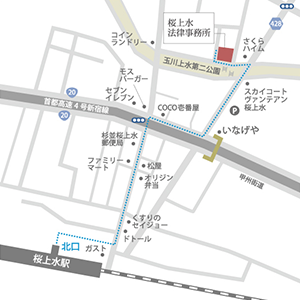Legally Drive Vision
If the driver`s vision in one eye is less than 20/40, but the other eye is 20/40 or better, the driver will switch to a “left mirror restriction” if there are no plans to correct the worst eye. [34] Unless you are excluded from driving due to other requirements, the use of a biooptic telescopic lens is permitted for the driving portion of your exam (not for the eye exam). You can delete online if your vision testing provider needs to be registered in the DMV online view registry. Drivers over the age of 65 must have an eye exam every 5 years. [58] You must prove that you can pass an eye exam without corrective lenses. An applicant using biooptic telescopic lenses is eligible for a driver`s licence if they meet ALL of the following criteria. Each candidate must: The DMV recognizes that the independence and mobility offered by the privilege of driving is an important factor in the quality of life for most Californians. The good news is that vision problems usually don`t prevent you from getting a driver`s license if you can prove that you can drive safely. Subp. 5. Limited License; Vision requirements. If warranted and subject to paragraph 5a, an applicant will be granted a restricted driver`s licence if he/she: There are also restrictions for visually impaired drivers.
Visual acuity: 20/40 in the best eye, with or without corrective lenses, no limitation. 20/100 in the best eye with limitations; 20/70 in the best eye if the worst eye is 20/200 or worse. Field of view: 60 degrees in one eye (30 degrees on each side). Binocular field of view between 110 and 140 degrees with limitations. Biooptical telescopes are allowed. Drivers should: There are many factors regarding your overall vision before the DMV determines what actions to take. Some of these factors include: The World Health Organization lists several categories of visual impairment. Visual impairment is defined as visual acuity between 20/60 and 20/200 or a corresponding loss of visual field at less than 20 degrees in the best eye with the best possible correction. Blindness is defined as visual acuity of less than 20/400 or visual field loss equivalent to less than 10 degrees in the best eye with the best possible correction [2]. Kentucky Medical Standards for Operators of Motor Vehicles, KAR 13:100, Section 11: Visual acuity of at least 20/60 or better in at least one eye with a single-lens system. Binocular horizontal field of view of at least thirty-five (35) degrees to the left and right of the attachment and a binocular vertical field of view of at least twenty-five (25) degrees above and below the attachment. Kentucky Bioptic Driving Act The following is a motor vehicle operation law in Kentucky that allows visually impaired drivers to use biooptic optics.
This law went into effect on January 1, 2001 and authorized bioptic driving in Kentucky. A NEW SECTION FROM KRS 186.400 TO 186.640 IS CREATED AS FOLLOWS: As soon as a registered supplier informs us electronically that you can take an eye test without corrective lenses, the restriction will be lifted if you renew your license online. 18. The applicant for or holder of a category M, M1 or M2 driving licence must have visual acuity: all drivers must have the best possible vision. At least 20/70 in both eyes, or both eyes together, may occur with or without corrective lenses if vision cannot be improved; However, if one eye is blind or 20/200 or worse, the other eye should be 20/40 or better. Field of View: The minimum acceptable field of view is continuously 130 degrees in the horizontal field of view. The use of telescopic lenses to meet visual standards is not recognized in Florida. Drivers with BCVA between 20/50 and 20/70 who use both eyes or 20/200 in both eyes succeed with a daytime driver limitation. [48] While it makes sense that drivers with low visual acuity, impaired fields of vision, or both are more likely to have motor vehicle crashes, there are no published reports to support this claim. Nevertheless, establishing strict national vision and eye examination standards for non-commercial car driver`s licenses would eliminate inconsistencies between states, facilitate the comparison of crash rates in different states and, if properly defined and strictly enforced, could help eliminate visual impairment as a cause of traffic accidents.
If you renew or replace your VDD document in an office, you can perform an eye test or prove that you meet our vision requirements by providing an eye examination report (PDF) (MV-619) completed by a qualified ophthalmologist. 2 If corrective lenses are required to reach 20/40, the driver shall exceed the restriction “corrective lenses required”[37] If the CVAM is less than or equal to 20/50, the driver is subject to restrictions on surface area, daylight and speed. If the field of vision is between 100º and 105º, exterior mirrors are required on both sides of the vehicle. [31] The DMV must ensure that all drivers meet minimum visibility standards. All clients with an original or renewed driver`s licence must have an eye test. Some states indicate the age at which routine vision tests should begin; In some states, repeated testing begins as early as age 62, but is more common at age 65 or 70. The frequency of follow-up examinations varies. In Illinois, candidates must begin annual eye (and road) tests at age 87. The provisions of this article (formerly 67 Pa. Code § 157.3), which prohibits the use of telescopic lenses to satisfy visual acuity requirements for driver`s licenses, does not violate Section 504 of the Rehabilitation Act of 1973 (29 U.S.C.
§ 794) or against equal protection or due process provisions of the federal or state Constitution. Ministry of Transport v. Liberati, 472 A.2d 741 (Pa. Cmwlth. 1984). Visual acuity test Standards for commercial driving licences A person may drive a commercial vehicle only if he has a distance sharpness of at least 20/40 (Snellen) in each eye without corrective lenses or a visual acuity corrected separately to 20/40 (Snellen) or better with corrective lenses, Distance binocular sharpness of at least 20/40 (Snellen) in both eyes with or without corrective lenses, Field of view of at least 70 degrees in the horizontal meridian of each eye and ability to: Recognize the colors of traffic lights and peripherals that are displayed in red, green, and yellow by default. Licensing Department, 13:21-8. 10th The DMV is authorized to test all candidates for vision in accordance with California Vehicle Code (CVC) §12804.9(a)(1)(E). If you wear corrective contact lenses when checking your vision, please inform the employee.



